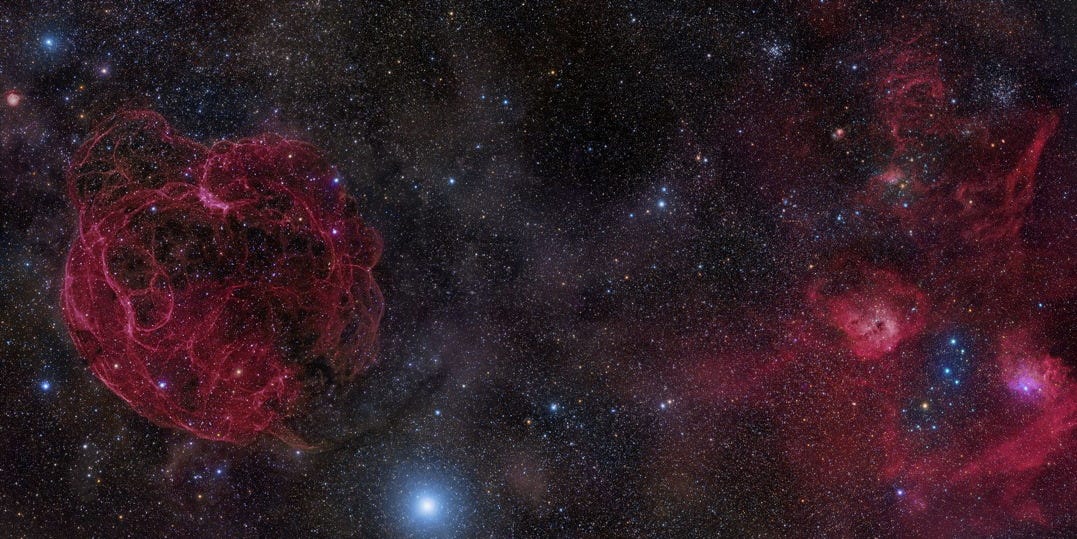Scientists discover origin of repeating signal from beyond our galaxy, but there’s still more to learn

A few minutes every morning is all you need.
Stay up to date on the world's Headlines and Human Stories. It's fun, it's factual, it's fluff-free.
On January 6, the scientific journal Nature published a report by a coalition of international astronomers announcing that the origin of a repeating fast radio burst (FRB) had been found.
This repeating signal originated from a galaxy 500 million light-years from Earth. It is only the fifth time that scientists have been able to trace an FRB back to its galaxy of origin.
What are FRBs?
An FRB is a rapid spike in electromagnetic radiation which can be detected by specialized antennae, known as radio telescopes, designed to detect radio waves.
FRBs are capable of releasing more energy than 500 million suns. They have been called one of the universe’s “strangest mysteries” as their origin and cause remain mostly unknown. Scientists estimate there could be as many as 2,000 FRBs crossing the universe any given day. However, FRBs only last for a few milliseconds and are therefore difficult to detect.
Each FRB is given a numbered name. This most recent FRB to have its origin determined is known as FRB 180916. The signal was traced back to a spiral galaxy 500 million light-years away.
A spiral galaxy is a collection of stars and gas that flows in either elliptical or irregular shapes. Our own galaxy, the Milky Way, is a spiral galaxy. At a distance of 500 million light-years, this galaxy is the closest known source of an FRB so far. The region from which FRB 180916 is emanating is seven light-years across.
The first discovery of an FRB occurred in 2007 by Duncan Lorimer, a US-based astrophysicist at West Virginia University, and one of his students, David Narkevic. Since that initial discovery, dozens more FRBs have been received by radio telescopes around the world. Most of those are non-repeating FRBs.
Discovery of repeating FRBs
Astronomers have discovered ten repeating FRBs, including FRB 180916. In August 2019, astronomers discovered eight new repeating FRBs. Prior to that, there had only been two known repeating FRBs.
The first repeating FRB, FRB 121102, was detected in 2012, although it wasn’t understood to be a repeating signal until Paul Scholz, a Ph.D. student at McGill University, discovered the repetition in 2015.
A second repeating signal was discovered in 2018 by the Canadian Hydrogen Intensity Mapping Experiment (CHIME) telescope. Thirteen separate bursts from this second signal were detected over a three-week period. These two first repeating FRBs are known as R1 and R2, respectively.
Since its initial discovery, R2 has seemingly vanished with no explanation known as yet, but with the most likely reason believed to be that the wavelengths at which R2 radiates are not detectable by the tools being used to search for it. Astronomers have also suggested it is possible that R2 has simply stopped emitting bursts, raising questions about its cause.
In January 2017, an international group of astronomers announced they had discovered the origin of FRB 121102. After observing the signal for 83 hours in 2016, nine separate bursts were detected. R1 was traced back to a dwarf galaxy roughly three billion light-years away.
Dwarf galaxies are smaller galaxies, usually with a few billion stars, as opposed to the hundreds of billions of stars spiral galaxies generally boast.
The Milky Way is known to contain 100 billion solar masses – with our sun being equal to one solar mass. It is estimated to have between 200 and 400 billion stars, or even as many as 700 billion.
Extraterrestrial intelligence
The existence of FRBs has led to speculation about the possibility that the signals are messages from intelligent life in another galaxy.
According to Avi Loeb of the Harvard-Smithsonian Center for Astrophysics (CfA), it remains a possibility. “We haven’t identified a possible natural source with any confidence,” Loeb said. “An artificial origin is worth contemplating and checking.” Other likely sources for these bursts are neutron stars or black holes.
Speculation about receiving messages from outer space is nothing new. Famous astronomer and author, Carl Sagan, wrote the 1985 science fiction novel, Contact, which tells the story of earth receiving a message from a technologically advanced alien species.
The book was later adapted into a 1997 feature film. After this publication, Sagan founded the SETI Institute, a non-profit organization dedicated to understanding the origins of life, searching for extraterrestrial life and educating the public on science.
Have a tip or story? Get in touch with our reporters at tips@themilsource.com




Comments ()